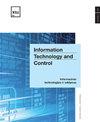HybDeepNet:基于心电信号的心律失常诊断,使用混合深度学习模型
IF 2
4区 计算机科学
Q3 AUTOMATION & CONTROL SYSTEMS
引用次数: 0
摘要
为了监测心脏的电指征并评估其性能,心电图(ECG)是最常用和常规的诊断仪器。心律失常只是人们可能患有的许多心脏病中的一个例子。心电图记录用于诊断心律失常,一种在极端情况下可能导致中风的异常心跳。然而,由于心电图包含大量的数据,通过可视化分析收集必要的信息是相当困难的。因此,开发一种有效的(自动)方法来分析大量的心电数据是至关重要的。几十年来,研究人员一直致力于开发自动和计算分类和识别心律失常的方法。然而,实时监测心律失常是具有挑战性的。为了简化检测和分类过程,本研究提出了一种基于深度学习的混合技术。这项研究有两个主要贡献。为了实现降噪和特征提取的自动化,首先将一维心电数据转换为二维尺度图图像。在此基础上,本文提出了一种基于剩余注意的2D-CNN-LSTM-CNN (RACLC)组合方法,该方法结合了多个学习模型,特别是2D卷积神经网络(CNN)和长短期记忆(LSTM)系统。这个模型的名字来源于两个深度学习的结合。提供形态信息的节拍本身和提供时间信息的与相邻片段配对的节拍都是必不可少的。我们提出的模型同时收集时域和形态心电信号数据并将它们结合起来。注意块在神经网络中的应用有助于增强心电信号中有价值的信息,获取心电信号中的机密信息,提高模型在分类时的效率。为了评估所提出的RACLC方法的有效性,我们利用MIT-BIH心律失常数据库进行了完整的实验研究,该数据库被大量研究人员使用。实验结果表明,本文提出的自动检测方法是有效的。本文章由计算机程序翻译,如有差异,请以英文原文为准。
HybDeepNet: ECG Signal Based Cardiac Arrhythmia Diagnosis Using a Hybrid Deep Learning Model
To monitor electrical indications from the heart and assess its performance, the electrocardiogram (ECG) is the most common and routine diagnostic instrument employed. Cardiac arrhythmias are only one example of the many heart conditions people might have. ECG records are used to diagnose an arrhythmia, an abnormal cardiac beat that can cause a stroke in extreme circumstances. However, due to the extensive data that an ECG contains, it is quite difficult to glean the necessary information through visual analysis. Therefore, it is crucial to develop an effective (automatic) method to analyze the vast amounts of data available from ECG. For decades, researchers have focused on developing methods to automatically and computationally categorize and identify cardiac arrhythmias. However, monitoring for arrhythmias in real-time is challenging. To streamline the detection and classification process, this research presents a hybrid deep learning-based technique. There are two major contributions to this study. To automate the noise reduction and feature extraction, 1D ECG data are first transformed into 2D Scalogram images. Following this, a combined approach called the Residual attention-based 2D-CNN-LSTM-CNN (RACLC) is recommended by merging multiple learning models, specifically the 2D convolutional neural network (CNN) and the Long Short-Term Memory (LSTM) system, based on research findings. The name of this model comes from a combination of the two deep learning. Both the beats themselves, which provide morphological information, and the beats paired with neighboring segments, which provide temporal information, are essential. Our suggested model simultaneously collects time-domain and morphological ECG signal data and combines them. The application of the attention block to the network helps to strengthen the valuable information, acquire the confidential message in the ECG signal, and boost the efficiency of the model when it comes to categorization. To evaluate the efficacy of the proposed RACLC method, we carried out a complete experimental investigation making use of the MIT-BIH arrhythmia database, which is used by a large number of researchers. The results of our experiments show that the automated detection method we propose is effective.
求助全文
通过发布文献求助,成功后即可免费获取论文全文。
去求助
来源期刊

Information Technology and Control
工程技术-计算机:人工智能
CiteScore
2.70
自引率
9.10%
发文量
36
审稿时长
12 months
期刊介绍:
Periodical journal covers a wide field of computer science and control systems related problems including:
-Software and hardware engineering;
-Management systems engineering;
-Information systems and databases;
-Embedded systems;
-Physical systems modelling and application;
-Computer networks and cloud computing;
-Data visualization;
-Human-computer interface;
-Computer graphics, visual analytics, and multimedia systems.
 求助内容:
求助内容: 应助结果提醒方式:
应助结果提醒方式:


